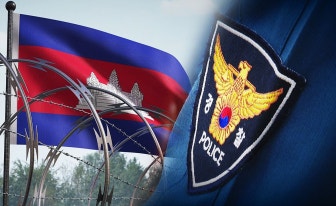Roh Jung-tae
The author is a writer and senior fellow at the Institute for Social and Economic Research.
The morning of Oct. 21, 1805, dawned over the waters off Cape Trafalgar, between Cádiz and the Strait of Gibraltar. There, Adm. Horatio Nelson commanded 27 ships of the British fleet as they closed in on 33 vessels of the combined French and Spanish armada under Adm. Pierre de Villeneuve. Shortly before noon, the decisive battle began.
At the time, Napoleon had gathered an army of 180,000 on the opposite shore of the English Channel — too vast for Britain to resist on land. Even a single day’s loss of naval control could have opened the way for invasion. Knowing this, Nelson led his outnumbered ships into combat despite the odds.
Warships of the era could not fire forward-facing guns, giving an advantage to fleets arranged in long parallel lines. Nelson broke convention. Trusting the skill of the officers who had long served with him, he advanced in two perpendicular columns to cut through the enemy line. From his flagship, HMS Victory, Nelson signaled a message that would become immortal in British naval history: “England expects that every man will do his duty.”
By around 5 p.m., the fighting was over. The allied fleet lost 14,000 men, half of them captured, and roughly 20 ships were taken. The British lost about 1,500 sailors but kept their entire fleet intact. It was an overwhelming victory, though one marked by tragedy — Nelson’s death. Struck by a sniper’s bullet, he continued to command until the outcome was certain. Around 4:30 p.m., as news of victory spread, he breathed his last words: “Thank God, I have done my duty.”
The triumph at Trafalgar crushed Napoleon’s ambition to invade Britain and secured British command of the seas for the next century. From that day forward, the Royal Navy became the foundation of the Pax Britannica, an era when Britain’s maritime power shaped global trade and politics.
The Battle of Trafalgar remains not just a tale of cannon fire and courage but a lesson in leadership — of a commander who led from the front, through storm and smoke, to ensure his men fulfilled their duty. In an age of shifting global tides and economic uncertainty, the question lingers: Where is Korea’s own ship steering today?
트라팔가르 해전
노정태 작가·경제사회연구원 전문위원
1805년 10월 21일 결전의 날이 밝았다. 스페인 남서부의 카디스와 지브롤터 해협 사이에 있는 트라팔가르 곶 서쪽 해상에서 호레이쇼 넬슨(사진)이 지휘하는 27척의 영국 함대가 피에르 드 빌뇌브의 지휘를 받는 33척의 프랑스·스페인 연합 함대를 따라잡은 것이다. 정오를 조금 앞둔 시각, 해전이 시작됐다.
프랑스는 18만 명의 대군을 영불해협 건너편에 집결해둔 상태였다. 영국으로서는 도저히 감당할 수 없는 육군이었다. 단 하루만 제해권을 잃어도 프랑스에 점령될 위기였다. 먼 거리를 이동한 넬슨의 영국군이 수적 열세를 무릅쓰고 전투에 돌입한 이유였다.
당시 전함은 정면으로 포를 쏠 수 없었다. 한 줄로 늘어선 채 기다리는 연합 함대에게 유리한 상황이었다. 넬슨은 동고동락해온 부하들의 실력을 믿고 2열 종대로 돌격했다. 넬슨 본인이 지휘하는 기함 HMS 빅토리호가 선두에서 깃발 메시지를 보냈다. “영국은 제군들이 각자의 의무를 완수하기를 기대한다.”
전투는 오후 5시경 마무리됐다. 연합군은 1만4000명의 병력을 잃었고 그중 절반이 포로가 되었으며 20척가량의 함선이 적의 손에 넘어갔다. 반면 영국군은 함대를 온전히 유지하면서 1500명가량의 병력을 잃었을 뿐이었다. 압도적인 승리였지만 뼈아픈 손실이 있었다. 넬슨 제독이 전사한 것이다. 저격병의 총탄에 맞은 그는 부상을 입은 채로 전투를 지휘하다가, 승리가 굳어진 오후 4시 30분 무렵 숨을 거두었다. “하느님 감사합니다. 저는 의무를 다했습니다.”
이 승리로 인해 나폴레옹의 영국 상륙 의지는 완전히 꺾였다. 영국은 향후 100년간 세계의 바다를 지배하게 되었다. 트라팔가르 해전 승리와 팍스 브리타니카는 의무를 완수하기 위해 폭풍을 뚫고 몸소 포탄 속으로 뛰어드는 리더십의 결과물이었다. 국제 정세와 경제의 파고가 높아지는 지금, 대한민국호는 어디로 가고 있는가.
This article was originally written in Korean and translated by a bilingual reporter with the help of generative AI tools. It was then edited by a native English-speaking editor. All AI-assisted translations are reviewed and refined by our newsroom.

![A portrait of Adm. Horacio Nelson by L. F. Abbott (1799). [WIKIPEDIA]](https://imgnews.pstatic.net/image/640/2025/10/21/0000078547_001_20251021095113762.jpg?type=w860)














































